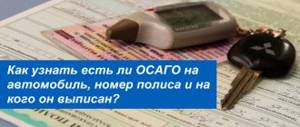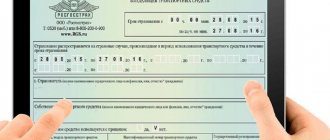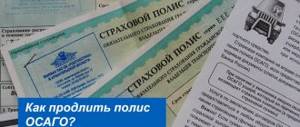OSAGO in case of an accident for an unlimited number of persons
In accordance with paragraph 2 of Art. 15 Federal Law No. 40-FZ “On compulsory civil liability insurance of vehicle owners,” insurance is divided into the following types:
- Limited in number of persons. The policy must name everyone who has the right to use the insured car.
- Unlimited. In this case, anyone can use the machine.
If we are talking about a policy for an unlimited number of persons, the situation is simpler. In this case, having only a driver’s license is enough for the insurer to compensate for losses.
The procedure for the victim in this case should be as follows:
- Call the traffic police and make sure that the employees draw up a report.
- Conduct an independent assessment of the damage. Both the insurer and the person responsible for the accident must be notified about it. In practice, representatives of insurance companies rarely appear for assessments, but it is recommended to follow the procedure.
- Contact the at-fault party's insurance company and file a claim for compensation for the damage.
- Then all you have to do is wait for the payments.
If the insurer does not make payments, the issue can be resolved through court.
Drivers instructions
Usually, the registration of persons who can drive the insured car is carried out directly during registration. In the form issued to the client by the insurer, there is a corresponding field where information about these citizens must be noted.
Things are more complicated if the driver must be listed on an already valid policy. This procedure can only be carried out by a representative of the insurance company, since doing this on your own is strictly prohibited. Therefore, to prevent a fine for an uninsured driver in 2021, you should contact the company again.
You need to have with you:
- Valid policy;
- Passport and license of the person who will be allowed to drive.
At the office, the client will be provided with a form containing information about the new driver. After this, the insurer makes changes to the database and puts a mark on the policy. At the same time, the company's seal is applied, which eliminates the possibility of illegal actions.
OSAGO in case of an accident for a limited number of persons
Dear readers!
Our articles talk about typical ways to resolve legal issues, but each case is unique. If you want to find out how to solve your particular problem, please contact the online consultant form
It's fast and free!
Or call us by phone (24/7):
If you want to find out how to solve your particular problem, call us by phone. It's fast and free!
+7 (495) 980-97-90(ext.589) Moscow,
Moscow region
+8 (812) 449-45-96(ext.928) St. Petersburg,
Leningrad region
+8 (800) 700-99-56 (ext. 590) Regions
(the call is free for all regions of Russia)
However, a policy issued for an unlimited number of persons is rare. And the situation becomes more complicated if we are talking about regular insurance, which clearly indicates the circle of persons allowed to drive.
What else to read:
- My car was scratched in the yard, what should I do?
- Europrotocol 2021
- How to get money instead of repairs under compulsory motor liability insurance: a detailed review
The consequences for a car owner found to be a victim in an accident will vary depending on the situation. There are two options:
- OSAGO is absent altogether.
- There is a policy, but the person driving the car was not included in it.
In the latter case, the actions should be similar to the situation with an unlimited policy. That is, you need to contact the insurer. In accordance with Article 14 of the law on compulsory motor liability insurance, the insurer must still make a payment, but in the future it will recover the amount of payment from the culprit.
In the absence of a policy, the insurer has no obligations to the driver at all. Accordingly, compensation will need to be collected directly from the culprit.
Video on the topic:
How much is the fine for transferring to an unregistered person?
There is no such. There is a current rule in 2021 regarding a fine directly for driving by a person who is not included in the insurance. But nothing will happen to the owner, proprietor or other person who transferred control.
Today, there is a fine for transferring the steering wheel to a person without documents for the right to drive (Part 3 of Article 12.3 of the Code of Administrative Offenses), as well as for a drunk driver (Part 2 of Article 12.8). But for entrusting the steering to a sober person not included in the OSAGO policy - no. But there may still be consequences, and these are what they are!
Subtlety of the law on transfer of control
An unobvious pitfall lies in a situation when a driver who is not included in the insurance policy gets into an accident, becomes the culprit, and at the same time disappears from the scene of the accident. In this case, the victim of an accident can receive insurance compensation under compulsory motor liability insurance if the car of the at-fault driver in which the accident occurred is identified.
And then the owner who transferred control will first receive letters of summons to the traffic police to testify at the analysis. You will be asked about who was actually driving. And even if you point the finger at a specific person, he may not be prosecuted for lack of evidence, unless he himself admits to it and/or there is confirmation in the form of a clear image of his face in video from eyewitness recorders. Simply his absence from the list of allowed drivers in the case of compulsory motor liability insurance with a limited number of allowed people will be a factor that will prevent him from being held liable for an accident.
However, the owner who transferred control will still not be punished for this. There will be no grounds for recourse to the owner after payment to the victim.
What are the consequences if the culprit is not included in the insurance?
If the person at fault for the accident does not have insurance issued to him, then the consequences for him will be as follows:
- He will have to compensate the victim for damages in the amount that is not covered by insurance.
- By way of recourse, he is obliged to compensate the insurer for losses resulting from insurance payments.
- He is held liable in accordance with Part 1 of Art. 12.37 Code of Administrative Offenses of the Russian Federation. This provision provides for punishment in the form of a fine of up to 800 rubles. This is not much, however, until the statute of limitations expires, the guilty party is advised to exercise caution. This is due to the fact that for repeated violations the sanctions will be harsher.
If there is no policy at all, the culprit will not have to deal with the insurance company. However, in accordance with Art. 1064 of the Civil Code of the Russian Federation, damages in full can be recovered from him.
○ Right of recourse to the culprit.
As already mentioned, the legislation on compulsory motor liability insurance provides for the right of the insurance company, after payment, to recover the full amount of payments from the culprit. In addition to situations where the car was driven by a person not included in the policy, full payments will be recovered in the following situations:
- If the culprit was drunk or under the influence of drugs.
- If the accident was committed intentionally.
- If the driver left the scene of the accident before receiving permission to do so from the traffic police inspector.
- The culprit did not send the necessary documents to the insurance company within 5 days.
- The culprit began repairing the car before 15 working days had passed since the accident.
- If the culprit was driving a taxi, bus or special transport - then in situations where the validity of the diagnostic card has expired.
What are the consequences if an innocent participant in an accident has no insurance?
If a person who is not the culprit of the accident is not included in the policy, then this will not affect the liability of the culprit’s insurance company in any way. However, the victim in such a situation has no choice - he can only file a claim with the insurance company of the person at fault.
Payment or compensation for damages in other ways is carried out in the usual manner. Since the victim has no fault in the incident, the insurer cannot demand compensation from him for expenses. However, a claim for damages may also be refused. But if the culprit has a properly issued policy, the obligation must be fulfilled.
In the absence of fault, a person who does not have a policy and is not the culprit of the accident will also have to pay a fine of 800 rubles. In this case, we are not talking about the absence of paper itself. A violation is the lack of data on the existence of a valid MTPL agreement in a unified information database.
Is it expensive to add a driver to your policy?
The cost of the procedure for adding citizens to an insurance policy depends on several factors. Company employees make calculations depending on the following coefficients:
- age of the car driver;
- driving experience;
- violations of traffic rules and the Code of Administrative Offenses of the Russian Federation;
- history of the incident.
Accordingly, the more driving experience and the clearer the history of violations and accidents, the lower the cost of the service.
Practice shows that the price range is wide due to the fact that drivers may have different driving experience and age.
So, for example, adding a 19-year-old son to a policy with a year of experience with a 45-year-old father with 20 years of driving experience, the coefficients will be applied according to the minimum indicators.
Consequently, the cost of the policy will be higher than if the less experienced driver had not been registered.
If the guilt is mutual
In the case of mutual fault, if none of the participants in the accident went to court to establish the degree, its share is distributed equally. So, if there are two private owners, the wine of each will be 50%, three - 33, (3)%.
If one of the participants does not agree with the degree, he can establish it in court. In this case, compensation is proportionate to the share of guilt. For example, if the fault of the first culprit is 30%, and the second – 70%, the insurance company will compensate the first 70%, and the second – 30%, respectively.
If one of the participants in the accident is not included in the compulsory motor liability insurance policy , then in this case there is a recourse to this driver in the share in which his fault is calculated.
Thus, if in the example described above the first driver does not have a policy, 30% of the damage to the other car will be recovered from him. That is, this amount will be equal to the amount that the insurance company will pay or reimburse for repairs.
FAQ
What to do if the culprit does not have money to pay compensation?
In case of pre-trial agreement, an agreement on compensation for damage is drawn up. To draw up this document, it is better for both parties to contact a lawyer and write down all the conditions and terms. In the event of a court decision, compensation may be recovered from the property of the culprit.
Why can’t you draw up a “European protocol” if the person responsible for the accident is not included in the compulsory motor liability insurance?
This protocol is drawn up only if both drivers involved in an accident are insured against civil liability.
What happens if the person at fault for an accident has a fake MTPL policy?
If the culprit tries to use false insurance to process payments, he may additionally face punishment under Article 327 of the Criminal Code.
Damage compensation procedure
Often, adequate drivers who provoked an accident assess the situation realistically and themselves come into contact with the victim, offering him an amicable solution to the issue. However, this does not always happen. If the culprit does not have a compulsory motor liability insurance policy or is not included in it, then the action algorithm for the victim will be as follows:
- The victim must notify the insurance company of the accident.
- The insurer initiates the damage assessment procedure. The driver’s task is to provide the car involved in an accident in proper condition at the specified time and place.
- If there has been any harm to health, you must additionally provide the insurer with medical reports and certificates.
- The amount of payment is determined by the amount of repairs (noted in the inspection report), as well as the amount of compensation for damage caused to health.
- If the driver injured in the accident is not satisfied with the amount of payment, he will file a claim with the insurance company. If there is no action on the part of the latter, the issue can be resolved through the court.
If the person responsible for the accident offers to resolve the issue peacefully, but promises to pay for repairs later, you must do the following:
- Take photographs of the damaged areas of the car.
- Record on video the agreement of the guilty person to compensate for the damage.
- Write down his passport details.
This will help avoid problems if the culprit evades his obligations in the future.
If a person who does not have a policy or is not included in it is a victim of an accident, his position is more attractive than that of the culprit. His rights are insured by law, so in any case he is entitled to compensation for damage to his car and health.
In the event of an accident, you must call the traffic police. Before their arrival, you should not touch anything at the scene of the accident, since the existing traces will be used to draw up a diagram of the accident. It is also recommended to take a photo or video of the accident site and the location of the car.
The traffic police representative must make a note that the victim does not have a policy. It is also necessary that one copy with the passport data of the second party be given to the culprit, and the second to the victim.
The further scheme will be determined by whether the culprit has a policy. If present, the actions should be as follows:
- You must report the accident to the insurance company of the person at fault.
- Wait for the results of the examination.
- If necessary, conduct your own independent examination, notifying the culprit and the insurer about it.
- If the victim does not agree with the amount of material damage determined by the insurer, he must file a pre-trial claim.
- If the insurance company refuses to accept the terms, the victim may go to court.
Regardless of whether the person without the policy is the culprit or the victim, he will have to pay a fine.
Design rules
To begin with, it should be emphasized that OSAGO is a mandatory document, without which no person should be allowed to drive. By law, insurance can be issued to a limited or unlimited number of persons who have permission to drive.
Obtaining a policy occurs in several stages:
- Collection of documents. First of all, you need to prepare a PTS and STS for the car, an identity card, and a driver’s license. You may also need a legal power of attorney, the former OSAGO.
- Visit to SK. Having chosen an insurance company, you should contact an employee. After checking the documents, an application is submitted.
- Technical inspection. The car is checked for faults. If they are identified, the policy may be refused.
- Calculation and payment of premiums. The cost is determined taking into account several factors. The driver must pay the specified amount before the agreement is concluded.
Attention! After this, the company is required to provide compulsory motor liability insurance. Refusal to issue a policy is a violation for which the car owner can file a complaint by going to court or the RSA.
Recourse from the culprit of an accident under compulsory motor liability insurance
The law on compulsory motor liability insurance provides for the institution of recourse. In accordance with it, the person who compensated the victim for the harm for the culprit (the insurance company) has the right to make a return claim against him. Recourse by an insurance company means an exchange of obligations between the insurer and the debtor who caused the damage. By way of recourse, the insurance company may demand compensation for the payments provided to the victim.
The insurer can issue a recourse within three years. This period begins from the date when the insurance company learns about the existence of recourse from it, that is, from the moment of compensation for damage. In practice, the procedure for claiming recourse is as follows:
- An accident occurs, one of the participants in which is not included in the insurance policy and was found guilty.
- Participants document the accident themselves by filling out a European report, or with the involvement of traffic police officers.
- The victim applies for compensation.
- The insurer compensates him for damage caused by a person not included in the policy.
- After a certain time, the culprit receives a letter at the registration address. It specifies a pre-trial requirement to voluntarily reimburse the insurer a certain amount based on Part 1 of Art. 14 Federal Law “On Compulsory Motor Liability Insurance”.
- The recipient can compensate for the damage voluntarily or through the court.
When going to court, expenses in the form of lawyer fees, state fees and small postage expenses are borne by the offender.
The absence of information about the culprit of the accident in the policy does not deprive the victim of the right to receive compensation. In any case, you must contact the insurer and demand compensation for damage.
justice pro...
After an accident occurs, it is necessary to find out whether those involved in the accident have insurance. By law, all road users driving vehicles must have liability insurance. But it may happen that there is insurance, but the culprit of the accident is not included in the compulsory motor liability insurance policy. Next, we will talk about what consequences await the participants in the accident - the victim in the accident and the culprit who committed the accident.
In this article we will not touch upon cases where the culprit does not have insurance or the insurance is expired. Also a separate line is the topic of counterfeit OSAGO. Let's consider the option when the at-fault party has a policy, but the person at fault for the accident is not included in the insurance (i.e. the MTPL policy is issued with a limitation on the number of persons allowed to drive the car).
How to find out whether the person at fault for an accident is included in the compulsory motor liability insurance policy or not?
After an accident, it is necessary to find out whether the participants in the accident have a compulsory motor liability insurance policy, and whether the alleged culprit of the accident and the victim are registered in it or not. According to paragraph 1 of Art. 11 Federal Law on Compulsory Motor Liability Insurance dated April 25, 2002 No. 40-FZ, the driver in an accident is obliged to inform other participants in the accident, at their request, information about the compulsory insurance agreement under which the civil liability of the owners of this vehicle is insured.
The culprit is not included in the OSAGO policy : fine
If the culprit of the accident is not included in the compulsory motor liability insurance policy, he will be punished in the form of an administrative fine. According to paragraph 1 of Art. 12.37 of the Code of Administrative Offenses of the Russian Federation, the fine for a driver who is not included in the insurance is 500 rubles.
Driving without insurance (or not included in the MTPL policy) and the policyholder is legally obligated to immediately notify the insurer in writing about the transfer of control of the vehicle to drivers not listed in the insurance policy as authorized to drive the vehicle. The insurance company has the right to demand payment of an additional insurance premium in accordance with insurance tariffs for compulsory insurance in proportion to the increase in risk (clause 3 of article 16 of the Federal Law on Compulsory Motor Liability Insurance).
If the person at fault for the accident is not included in the insurance, who will compensate for the damage?
The victim, as well as the person most guilty of the accident, will be interested in the question “will the insurance company pay if the culprit is not included in the compulsory motor liability insurance policy?” Let's turn to the law. Under compulsory motor liability insurance, the risk of civil liability of the owner of the vehicle is insured for obligations arising from causing harm to the life, health or property of victims when using the vehicle. Further in paragraph 2 of Art. 6 of the Law on Compulsory Motor Liability Insurance provides a list of exceptions, among which there is no clause stating that the culprit is not indicated in the policy.
Thus, if the culprit is not included in the MTPL policy, the insurer makes the payment. This is also confirmed by paragraph 45 of the Resolution of the Plenum of the Supreme Court of the Russian Federation dated December 26, 2017 N 58 “On the application by courts of the legislation on compulsory insurance of civil liability of vehicle owners”:
“Under a compulsory insurance contract, the insured is the risk of civil liability when operating a specific vehicle, therefore, if an insured event occurs as a result of the actions of the policyholder or another person using the vehicle, the insurer is not exempt from paying insurance compensation.”
But there is a limit on the insured amount (payment) under compulsory motor liability insurance:
- 500,000 rub. in terms of compensation for harm caused to the life or health of each victim,
- 400,000 rub. in terms of compensation for damage caused to the property of each victim.
In case of exceeding the specified amounts, compensation for damage must be addressed to the owner of the car (the driver - the causer of harm or the owner - more on this later).
The person at fault for the accident is not included in the compulsory motor liability insurance policy: what to do?
We found out who pays if the culprit is not included in the compulsory motor liability insurance policy. Which insurance company should the victim contact? If the victim does not have insurance, you will have to contact the insurance company of the culprit. If the injured party has insurance (or the innocent person in the accident is not included in the compulsory motor liability insurance), you need to contact the victim’s insurance company for direct compensation of losses. It should be noted that this rule is used if damage is caused only to vehicles (Article 14.1 of the Law on Compulsory Motor Liability Insurance).
The culprit of the accident, who is not included in the compulsory motor liability insurance policy, faces a recourse claim from the insurance company that compensated the damage to the victim.
The culprit of the accident is not included in the compulsory motor liability insurance: regression
According to Art. 14 of the Law on Compulsory Motor Liability Insurance (OSAGO), the insurer who has made the insurance indemnity transfers the right of claim of the victim against the person who caused the harm in the amount of the insurance indemnity paid to the victim. One of the conditions for recourse is that the person who caused the harm is not included in the compulsory insurance contract as a person allowed to drive a vehicle (clause D, Article 14 of the law on compulsory motor liability insurance).
Those. If the culprit of the accident is not included in the compulsory motor liability insurance policy, then he will be required to compensate the damage from the insurance company in the amount of the insured amount paid to the victim.
Euro protocol, if the culprit is not included in the insurance
Registration of documents about an accident without the participation of authorized police officers (the so-called “Euro protocol”) is possible if the accident occurred as a result of the interaction (collision) of two vehicles (including vehicles with trailers), the civil liability of the owners of which is insured in accordance with law on compulsory motor liability insurance. Therefore, we can conclude that when the person responsible for the accident is not included in the insurance, issuing a European protocol is impossible.
The person at fault for the accident is not included in CASCO insurance
If the person at fault for the accident is not included in the CASCO insurance, then there will be a payment under CASCO, but he will face a claim for compensation for losses from the insurance company through the procedure of subrogation. Read more about this in this article.
Who to sue: the owner or the culprit of an accident not included in the compulsory motor liability insurance?
In the event that the insurance compensation is not enough to cover the damage caused to the victim as a result of an accident, then a claim is made against the guilty party in excess of the insurance compensation. Who will be the defendant in the case - the owner or the culprit of the accident, not included in the compulsory motor liability insurance, depends on the circumstances of the case. Thus, the victim has the right to demand compensation from the culprit for damages, calculated on the basis of the cost of repairs without taking into account wear and tear, in some cases UTS.
I got into an accident: it’s my fault, I’m not included in the insurance
So, the driver (those at fault for the accident) who is involved in an accident (not included in the insurance) will face the following consequences:
- administrative penalty,
- a demand for payment in the amount of the insurance compensation made to the victim from the insurance company in which the owner of the car driven by the culprit is insured under compulsory motor liability insurance.
Also, the owner of the car, in the event of damage to the car, can demand that the driver who committed the accident (not included in the insurance) pay for repairs.
The culprit of the accident is not included in the compulsory motor liability insurance policy: judicial practice
According to the Determination of the Supreme Court of the Russian Federation dated January 16, 2007 N 44-B06-14, “regardless of the conditions on which the compulsory insurance contract is concluded, the insured amount must be paid to the victim who suffered harm as a result of damage to his car due to the fault of the driver not included in a contract of compulsory insurance as a driver allowed to drive a vehicle, if such a person drove the car legally (for example, on the basis of a written power of attorney). At the same time, when concluding a compulsory insurance contract with limited use of a vehicle, the insurer has the right of recourse against the specified person in the amount of the insurance payment made by the insurer.”
This is also confirmed in the Determination of the Constitutional Court of the Russian Federation dated July 12, 2006 N 377-O “On the complaint of citizen Evgeniy Anatolyevich Kuznetsov about the violation of his constitutional rights by paragraph eleven of Article 1, paragraph 2 of Article 15 and Article 16 of the Federal Law “On compulsory insurance of civil liability of vehicle owners funds."
Those. the victim will receive insurance compensation if the culprit of the accident is not included in the compulsory motor liability insurance policy and was driving the car legally.
If the owner of the car is not included in the insurance and is at fault for the accident, will he receive a recourse claim from the insurance company?
There is a Determination of the Investigative Committee for civil cases of the Supreme Court of the Russian Federation dated July 17, 2021 N 69-KG18-9, according to which “by virtue of a direct provision of the law, the insurer has the right of recourse to the person driving the vehicle, but not included in the number of drivers allowed to drive under the MTPL agreement, even if this person is the owner of the vehicle.”
Thus, if it turns out that the culprit of the accident is not included in the compulsory motor liability insurance policy, the victim will receive insurance compensation - the insurance company cannot refuse on the basis that the culprit of the accident is not included in the insurance. The driver himself, who committed an accident without being indicated in the OSAGO policy as a person allowed to drive, will receive, by way of recourse, a requirement from the insurance company to pay the amount of insurance compensation to the victim.
Posted by:
Ralenko Anton Andreevich
Moscow 2018











